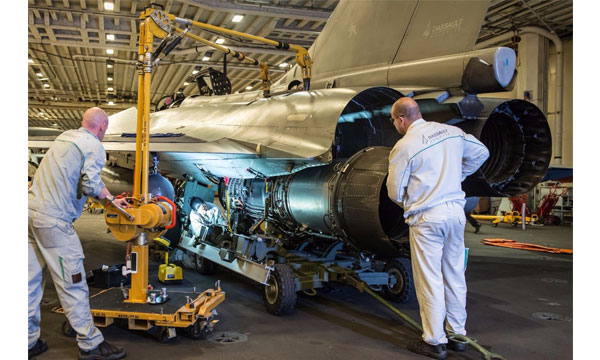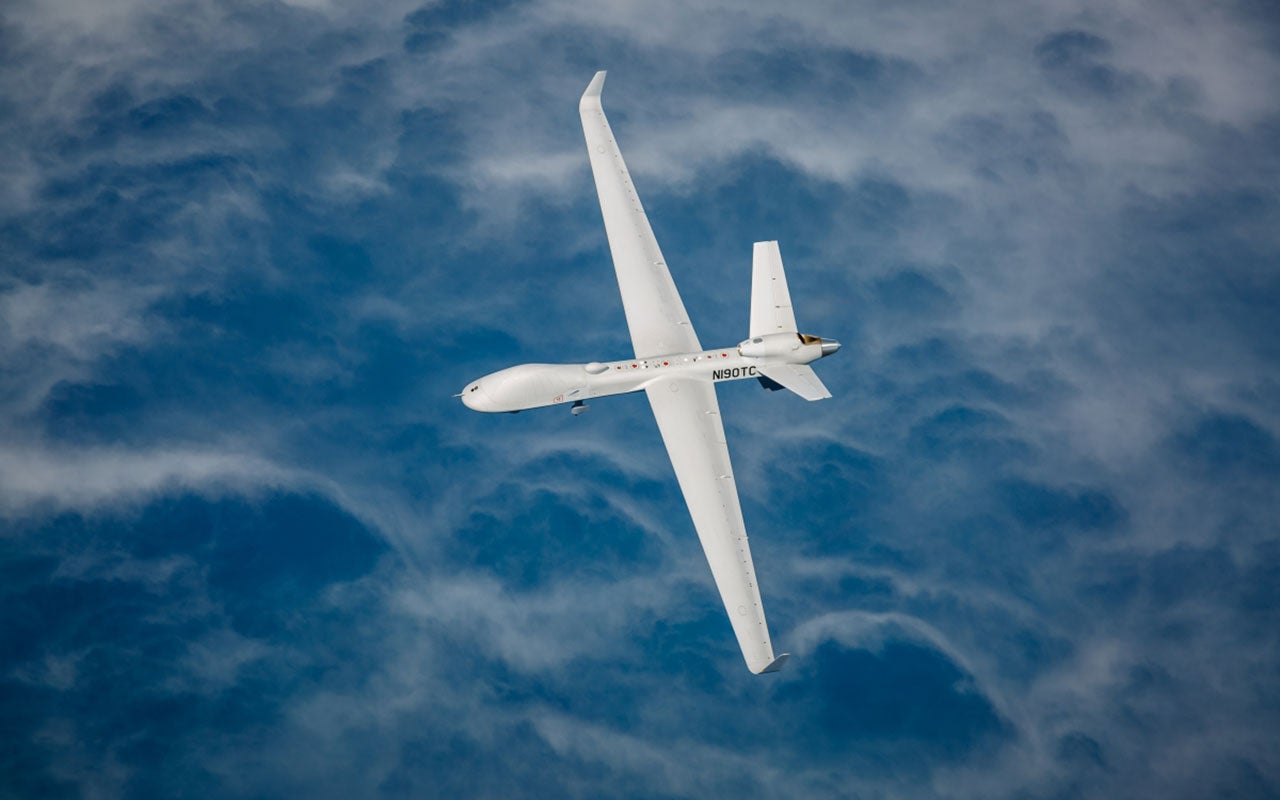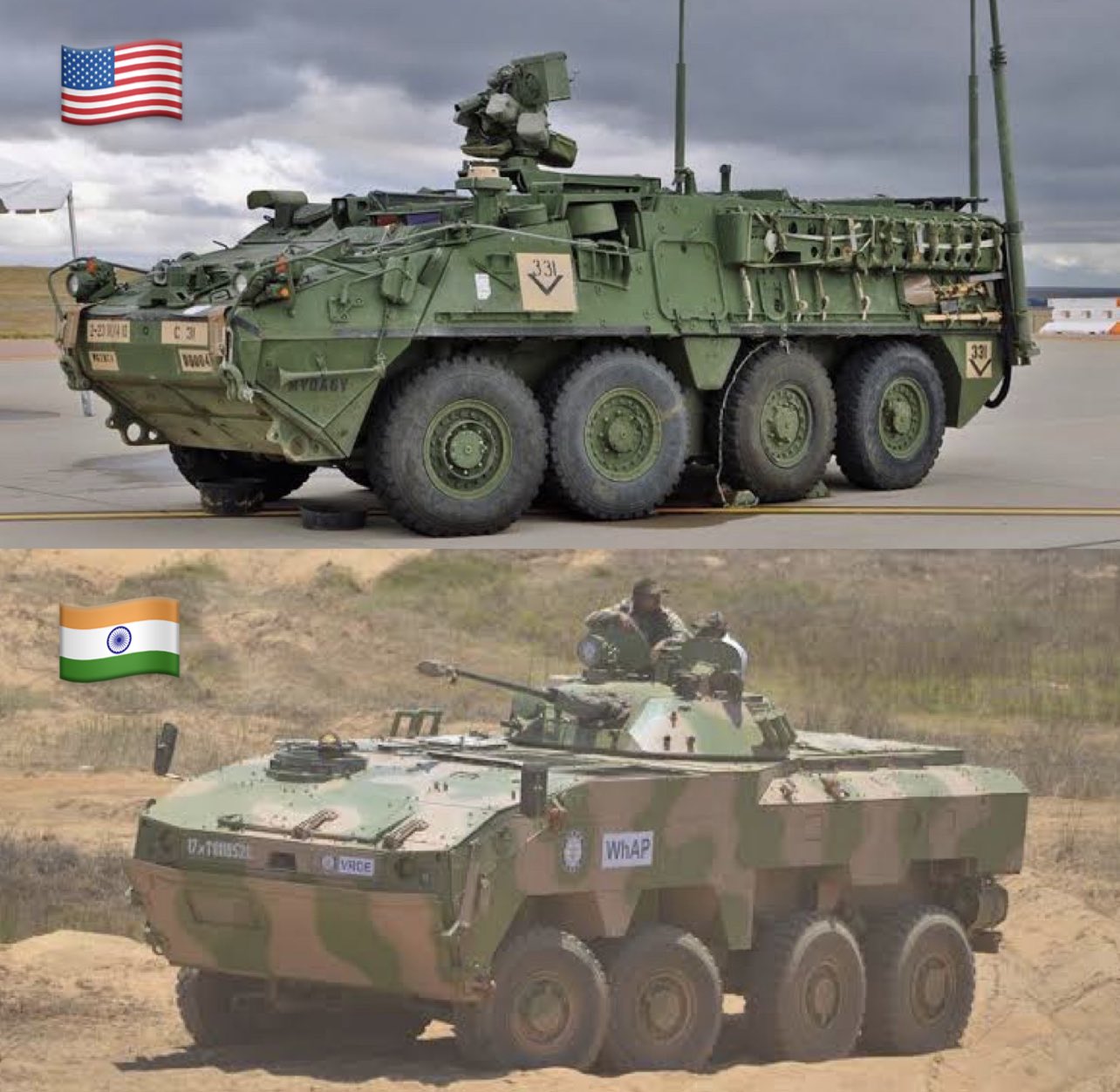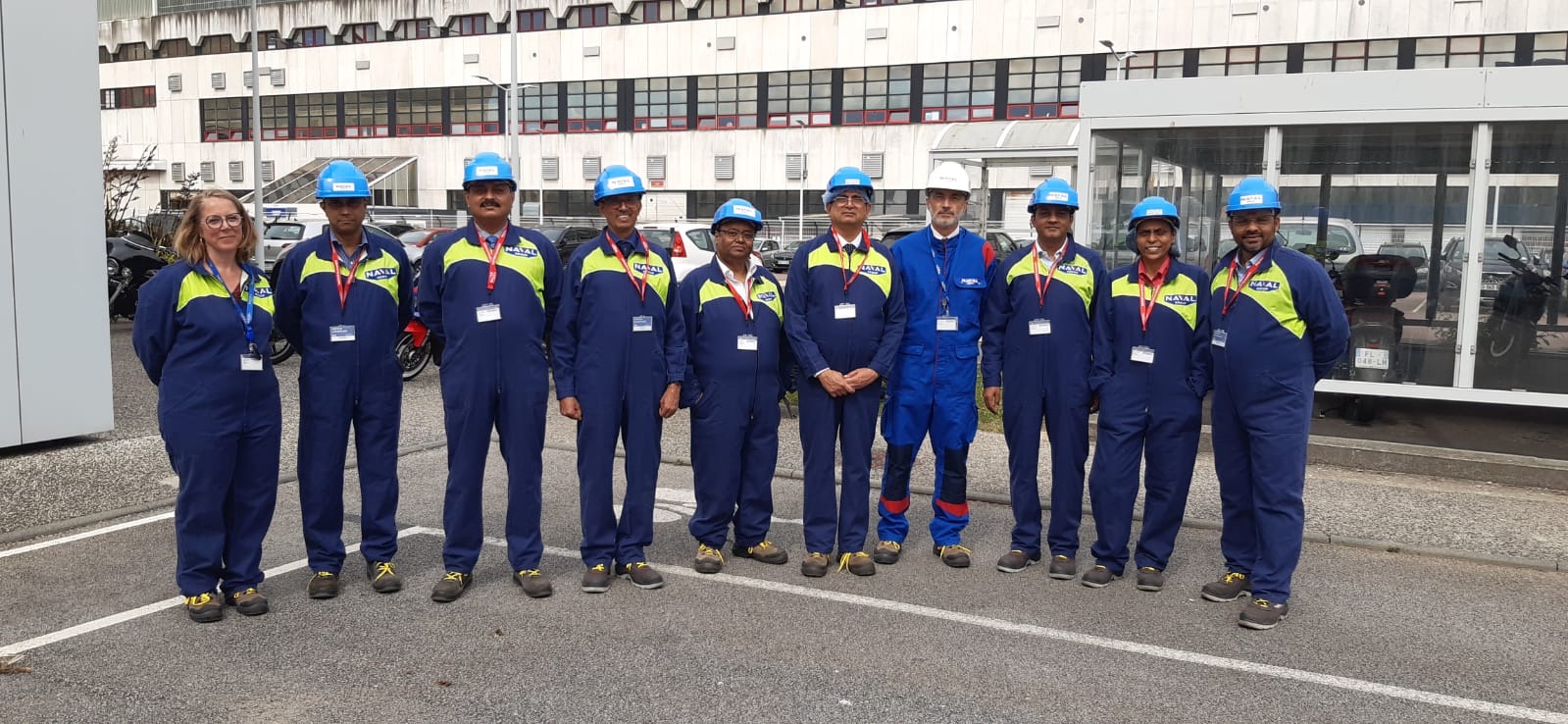SOURCE: AFI

A recent report by the American Chamber of Commerce in India (AMCHAM) reveals a significant shift in India’s defence export landscape. The report says that India’s defence exports in FY 2022-23 witnessed a tenfold jump compared to five years ago, reaching a total of $1.6 billion.
The US has emerged as India’s leading defence export partner, capturing over 50% of the market share. This comes on the heels of NSA Jake Sullivan’s visit to India, potentially indicating a strengthening partnership between the two nations in the defence sector.
Continue readingSOURCE: AFI

An Indonesian Air Force delegation, led by Air Vice Marshal Minggit Tribowo, visited New Delhi today for discussions with representatives from India’s defense sector. The delegation interacted with officers from Defence Production India, headed by JS (Naval Systems) Rajeev Prakash, alongside officials from Hindustan Aeronautics Limited (HAL), Tata Advanced Systems Limited (TASL), and Zen Technologies.
During the visit, Mr. Prakash showcased the manufacturing prowess of the Indian defense industry to the Indonesian delegation. This follows recent developments indicating a growing defense partnership between the two nations.
Continue readingSOURCE: AFI

Bharat Forge Ltd. announced the successful participation of its wholly-owned subsidiary, Kalyani Strategic Systems Limited (KSSL), at Eurosatory 2024. Held in Paris, France, Eurosatory is a premier global defense and security exhibition that attracts leading industry players.
KSSL leveraged this prestigious platform to showcase its capabilities and extensive product portfolio. Beyond being a renowned manufacturer of 155mm Artillery, KSSL impressed attendees with its offerings of various types of artillery shells ranging from 70mm to 155mm, 120mm mortar bodies, and even incendiary shells, including the M107.
Continue readingSOURCE: RAUNAK KUNDE / NEWS BEAT / IDRW.ORG

The Brazilian Army is aiming to bolster its air defense capabilities with the acquisition of new Medium Altitude/High Altitude Air Defense Artillery Systems. This project is part of the Army’s Strategic Program for Air Defense.
In April 2024, General Tomás Miguel Paiva, the Army Commander, expressed concerns before the Committee on Foreign Relations and National Defense (CREDN) of the Chamber of Deputies. He highlighted the lack of sophisticated medium and high-altitude air defense systems in Brazil. While acknowledging “relative protection” up to 3,000 meters, he emphasized the need for advanced technologies to safeguard the nation’s airspace.
Continue readingSOURCE: RAUNAK KUNDE / NEWS BEAT / IDRW.ORG

The Indian Navy recently completed its evaluation of Navantia’s S80 submarine, a contender for Project 75I, a program to acquire six next-generation submarines. The evaluation took place at a shipyard in Cartagena, Spain, last week.
A key highlight was Navantia’s showcase of their Bioethanol Stealth Technology (BEST) Air-Independent Propulsion (AIP) system. This land-based demonstration offered a glimpse into their 3rd generation AIP technology, which the company claims surpasses the fuel-cell based AIP offered by its competitor, ThyssenKrupp Marine Systems (TKMS) of Germany.
Continue readingSOURCE: RAUNAK KUNDE / NEWS BEAT / IDRW.ORG

French aircraft manufacturer Dassault Aviation SA is making a strategic move in the Indian market. The company is reportedly acquiring land near Jewar International Airport for a dedicated Maintenance, Repair, and Overhaul (MRO) facility to service India’s Mirage 2000 and Rafale fighter jets.
This development comes alongside Safran SA, the engine manufacturer for Rafale, establishing a similar MRO facility specifically for Rafale engines at their existing LEAP engine facility in Hyderabad. This facility, expected to be operational by 2025, caters to civilian aircraft but could potentially handle Rafale engine needs if the numbers justify it.
Continue readingSOURCE: AFI

As India’s geopolitical and strategic ambitions continue to grow, the need for a robust and versatile air transport capability for the Indian Air Force (IAF) becomes ever more critical. One potential avenue for enhancing this capability is the development of a domestic equivalent to China’s Xian Y-20A transport aircraft. Such an aircraft could serve as a modern replacement for the ageing Ilyushin IL-76 fleet, which has been a mainstay of the IAF’s strategic airlift capacity for decades.
The Ilyushin IL-76, introduced into the IAF in the mid-1980s, has served as a reliable workhorse for heavy airlift duties. However, with technological advancements and increasing demands on air transport, the IL-76 is showing its age. Issues such as maintenance challenges, fuel inefficiency, and limited payload capacity highlight the need for a more modern solution.
Continue readingSOURCE: AFI

India and the US are joining forces to develop next-generation artificial intelligence for military applications. This collaboration includes the launch of a groundbreaking AI multi-domain situational awareness product, jointly created by American defense contractor General Atomics (GA-ASI) and Indian firm 114AI.
The new product is designed to support joint all-domain command and control, providing military operators with a crucial advantage in complex situations. According to GA-ASI, the capabilities demonstrated by the 114AI team suggest this technology will be a game-changer for military operations.
Continue readingSOURCE: AFI

The Indian Space Research Organisation (ISRO) is taking a significant step forward in its Reusable Launch Vehicle (RLV) technology development program. As reported by The Times of India (TOI), ISRO plans to utilize a modified Geosynchronous Satellite Launch Vehicle (GSLV) rocket to launch RLVs for orbital re-entry demonstration missions in the next phase of testing.
The key modification to the GSLV involves replacing its powerful cryogenic upper stage with a modified version of the PS4 stage, the last stage of the PSLV rocket. This switch is driven by the weight of the RLVs being tested. With an expected weight of 3.5 to 4 tons, the RLVs don’t require the massive energy output of the GSLV’s cryogenic stage.
Continue readingSOURCE: AFI

US Ambassador to India, Eric Garcetti, has warned Indian companies of the serious consequences they face if they violate global sanctions imposed on Russia. This warning comes after Japan sanctioned Bengaluru-based Si2 Microsystems, an electronics equipment designer and manufacturer, for allegedly helping Russia circumvent sanctions related to the Ukraine war.
Si2 Microsystems’ troubles don’t end with Japan. The company was previously sanctioned by the European Union in February 2024 and the US in November 2023, with both accusing it of supporting Russia’s military and defense sectors.
Continue readingSOURCE: IDRW.ORG

According to sources close to idrw, the Indian Army’s evaluation of contenders for its new 8×8 wheeled armored vehicle program has hit a snag. Local offerings, including DRDO’s WhAP 8×8, reportedly received negative feedback, with the Army favoring the American Stryker for its superior design and protection.
Reports suggest the Army views the Stryker as a more robust platform compared to indigenous alternatives. This contradicts DRDO’s stance, which positioned their WhAP 8×8 as superior to vehicles like the Stryker, Fuchs 2, and Piranha 3 based on a comparison chart.
Continue readingSOURCE: IDRW.ORG

A DRDO team recently visited Naval Group France to discuss the progress of integrating an indigenous Air Independent Propulsion (AIP) system into Kalvari-class submarines. This collaboration marks a significant step towards India’s “Atmanirbhar Bharat” (Self-reliant India) initiative in the defense sector.
Last year, DRDO and Naval Group signed an agreement to equip INS Kalvari with a fuel cell-based AIP system developed by DRDO’s Naval Materials Research Laboratory (NMRL). The agreement includes certification by Naval Group to ensure the safe and effective integration of the AIP system within the submarines.
Continue readingSOURCE: AFI

French aircraft giant Dassault Aviation SA is strengthening its ties with India’s aerospace industry. The company has begun sourcing titanium parts from Indian companies for the production of Rafale fighter jets, a move that signifies a broader effort to expand its supply chain and potentially reduce reliance on traditional sources.
This strategic collaboration benefits both parties. Dassault gains access to a potentially reliable and cost-effective source of high-quality titanium parts, crucial for the construction of its advanced fighter jets. Indian companies, on the other hand, secure valuable partnerships with a leading player in the aerospace sector, fostering technological advancements and growth in their domestic industry.
Continue readingSOURCE: AFI

In a significant step towards self-reliance in defense capabilities, India has developed SEBEX 2, a new explosive material certified by the Indian Navy. This innovation by Economic Explosives Limited, a subsidiary of Solar Industries, is reported to be twice as powerful as TNT (trinitrotoluene), making it one of the strongest non-nuclear explosives globally.
SEBEX 2 holds the potential to revolutionize the destructive power of bombs and artillery shells without increasing their weight. This translates to enhanced potency and efficiency of weaponry, according to officials. The high-melting explosive composition is designed to inflict greater damage on targets through blast and fragmentation effects, making it ideal for warheads, aerial bombs, and artillery shells.
Continue readingSOURCE: AFI

Indian security forces have been put on high alert following the escape of 19 prisoners, including a “dreaded militant commander,” from a jail in Pakistan-occupied Kashmir (PoJK) on Sunday night.
Among the escapees is Ghazi Shehzad, a terror suspect with alleged ties to Lashkar-e-Taiba (LeT) and Jamaat-ud-Da’wah, led by Hafiz Saeed. Shehzad was reportedly earlier active in Jammu and Kashmir before his arrest for involvement in militancy. Some reports suggest he may have been exchanged as part of a prisoner swap.
Continue reading